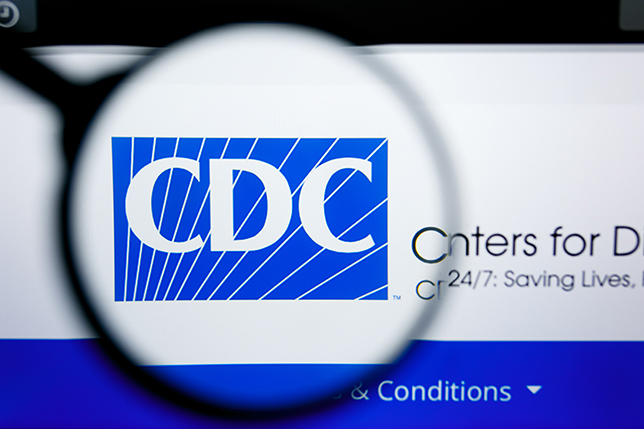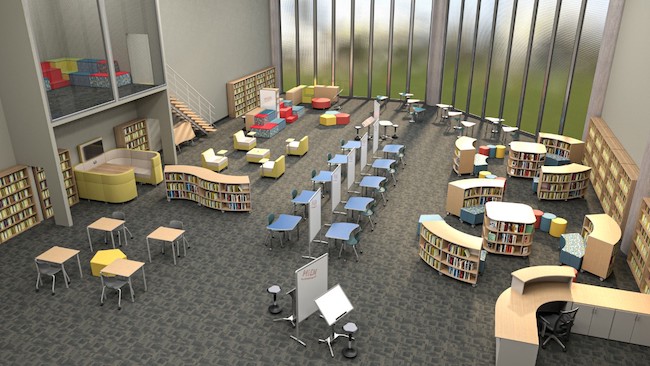As the pandemic continues to affect the status of education, challenging school districts to develop plans that protect the need to learn, antimicrobial copper can play an effective role in a lasting strategy to combat the spread of infection.
The White House launched a new program Thursday, calling on schools, colleges and universities to work to improve indoor air quality. In conjunction with the launch, the Environmental Protection Agency also released new guidelines for best practices for improving indoor air quality and reducing the spread of COVID-19 further.
Several North Texas school districts cancelled school on both ends of the long Martin Luther King Jr. Day weekend, citing staff shortages and a surge in COVID-19 cases.

This episode’s guest is Benjamin Strain, Higher Education Design Leader for DLR Group. He's here to discuss an ongoing DLR research initiative called "The Evolution of Campus," which involves interviews and outreach to higher education institutions to help them navigate the pandemic, return to campus, and explore new spatial and design requirements to meet the needs of faculty and students. He reveals some common themes among all three rounds of research (so far) and addresses the question on everyone's mind: "What’s the future of the physical campus?"
A news release from the Learning First Alliance suggests that one in five children missed receiving routine vaccines during the pandemic.
In response to the spread of the Delta variant of COVID-19, the CDC once again updated its mask-wearing guidelines this week. It recommends "universal indoor masking for all teachers, staff, students, and visitors to schools."
The results of a new survey from JLL have revealed that campus cleanliness and indoor air quality now rank among the top factors in college selection. JLL, a Fortune 200 commercial real estate and professional services firm, surveyed about 500 parents of tenth- through twelfth-grade students about their priorities while considering higher education destinations.

As K–12 schools gear up to return to in-person learning for the coming school year, one district already has a success under its belt. The Muskego-Norway School District in Muskego, Wis., successfully went in-person, five days a week, for the entire 2020–21 academic year. Our guest today is Tony Spence, the Chief Information Officer for that district. He takes a deep dive into explaining the logistics behind pulling off such a unique feat. He explains what went into creating the district’s plan, committing to it and—most importantly—effectively communicating that plan to students, parents, staff and administrators.
The Centers for Disease Control and Prevention (CDC) updated its guidelines for COVID-19 prevention in K–12 schools on Friday. The health organization announced that fully vaccinated teachers and students will not be required to wear masks inside school buildings.

Rapid Dx Laboratory has announced a partnership with Concentric by Ginkgo to provide pooled COVID-19 testing to K–12 schools in both in-person and hybrid learning environments.

A new global education recovery tracker project developed by Johns Hopkins University's eSchool+ Initiative, the World Bank and UNICEF reveals the progress of schools around the world in the fight against COVID-19.
K-12 instruction is being delivered in many different permutations right now, and so families are making various choices for the education of their students. By mid-March 2021 more than three-quarters of fourth- and eighth-grade students (76%) were being offered the chance to attend public schools open at least some of the time for face-to-face lessons. But just a fraction of those students attended in-person instruction. The remaining 24% of grade 4 and grade 8 students were in schools that were only online.
UV-C disinfection solutions provider INVZBL has launched a new line of products dedicated to reducing the risk of virus transmission through shared devices in K-12 schools.

The Centers for Disease Control and Prevention (CDC) announced on Friday, March 19, that it is relaxing social distancing requirements for students returning to school for in-person learning. The organization has determined that students wearing masks in a classroom environment can be spaced just 3 feet apart.
Michigan State University has partnered with pathogen control technology vendor UV Angel to install UV Angel Clean Air units around the MSU campus. They have already been added to busy areas like the Olin Health Center and Wonders Hall, and they’re scheduled for installation soon in campus athletic facilities. The goal is to foster cleaner, safer environments for students and faculty as they return to campus during (and after) the coronavirus pandemic.
One of the primary concerns in reopening schools is being able to ensure proper social distancing between students.Guidance from the CDC suggests setting up physical barriers like partitions and sneeze guards in areas where spacing people out remains impractical. Building off of that idea, LumAware recently released a series of desk guards customized for use in the classroom.

Matterport virtual tours offer the means to help schools set up a reopening plan and relay that information effectively. The technology lets schools create a virtual, 3D rendering of the entire campus. With this digital model in place, officials can get a fuller view of how students use the space, the changes that need to be made, and where to implement them.
The Centers for Disease Control and Prevention (CDC) released an updated guide on how K-12 schools around the country can take steps to safely reopen—for good.
The U.S. Department of Education will be running a survey to understand the status of in-person learning at the nation's schools. The Institute of Education Sciences (IES) will oversee the project, dubbed the "NAEP 2021 School Survey." Currently, the agency noted, there isn't enough data to understand the status of school re-opening or how students are learning. The survey is intended to fill that gap.

With a curriculum centered on connection to nature and environmental stewardship, Linden Waldorf School's vision for the pavilions were to move all classes completely outdoors where students get to be in nature throughout the whole school day.
Two new reports by the Centers for Disease Control and Prevention conclude that COVID-19 is spreading on college campuses due to congregate housing, the increase of social gatherings, and disregard for mask wearing.

Imagine a Roomba with a plastic pillar on top, roaming through a room dispensing disinfectant onto chairs, table-tops and other surfaces.

A building’s HVAC technology can help decrease the transmission rate or mitigate the risk of exposure. Thus, schools must consider their HVAC system as part of their overall COVID-19 mitigation strategy, in addition to social distancing, cleaning, screening, signage and operational practices.
As part of a phased ramp-up in its return to full operations, Northwestern University Athletics and Recreation has installed filtration systems in the locker and weight rooms and other high-traffic spaces in its athletic facilities.

If the global pandemic sidelined your plans for creating a very inviting, collaborative, nurturing media center space, get your vision back on track with these five success tips.
SchoolStatus, which produces a mass notification and communication software-as-a-service platform for schools, has added functionality to enable contact tracing reporting and tracking.
Residence hall staff and graduate students at the University of Michigan are on strike due to lack of coronavirus health protections on campus. The grad students and residence hall staff began separate strikes on the same day, Sept. 8.
Bradley University is requiring the entire student body to quarantine for two weeks because of a spike in COVID-19 on campus, officials announced this week. The temporary quarantine is in effect until Sept. 23.

In this episode of Schools In Focus podcast, I speak to Belinda Oakley, CEO of Chartwells K12 and Seth Ferriell, CEO of SSC Services for Education, about school food service during a pandemic.

Gen Z is advocating for immediate action to secure their future. However, limited by their age, Gen Z is looking to older generations to support them through social and legislative change and conscientious transformations — socially, educationally, and within the built-environment.